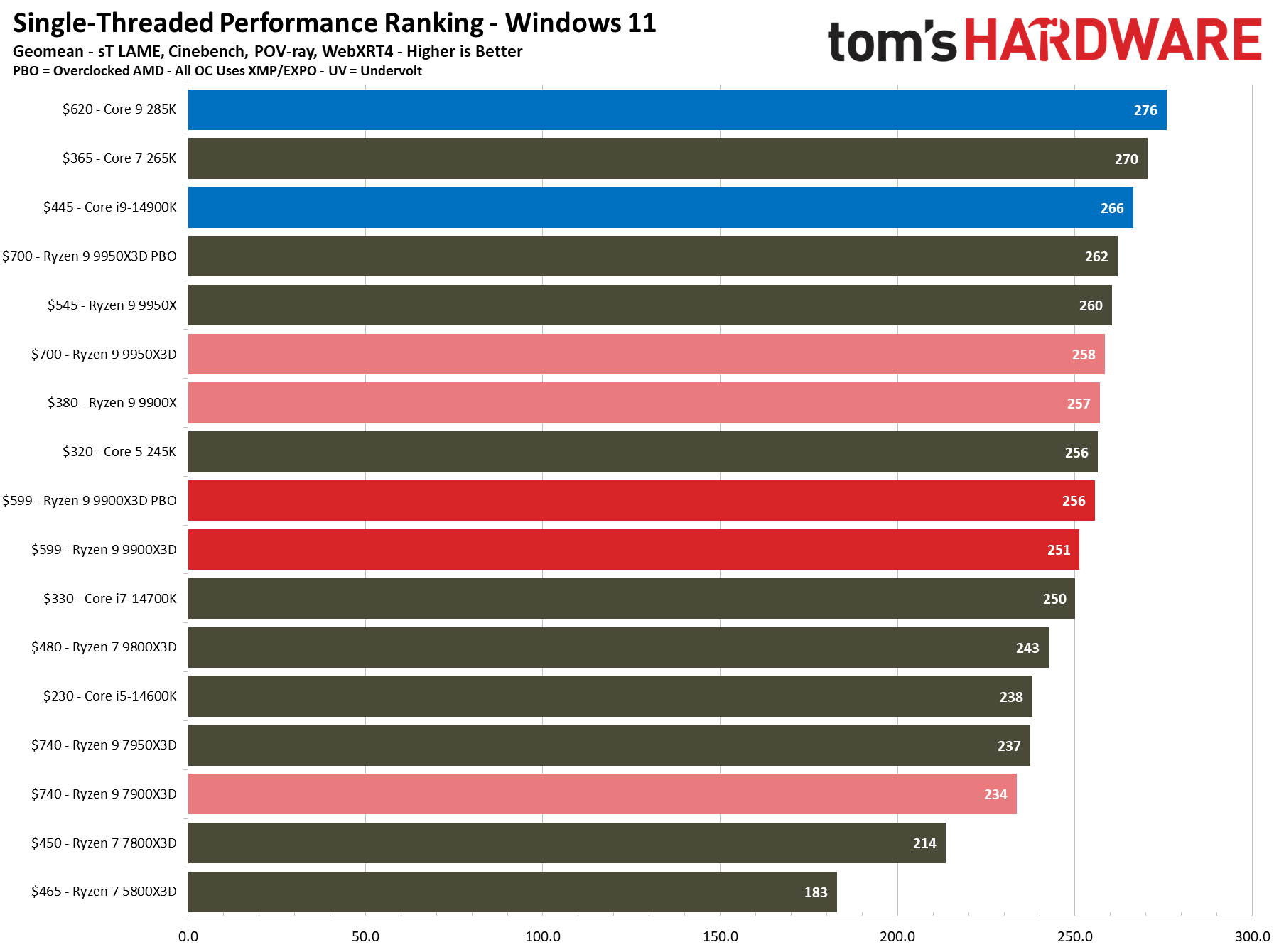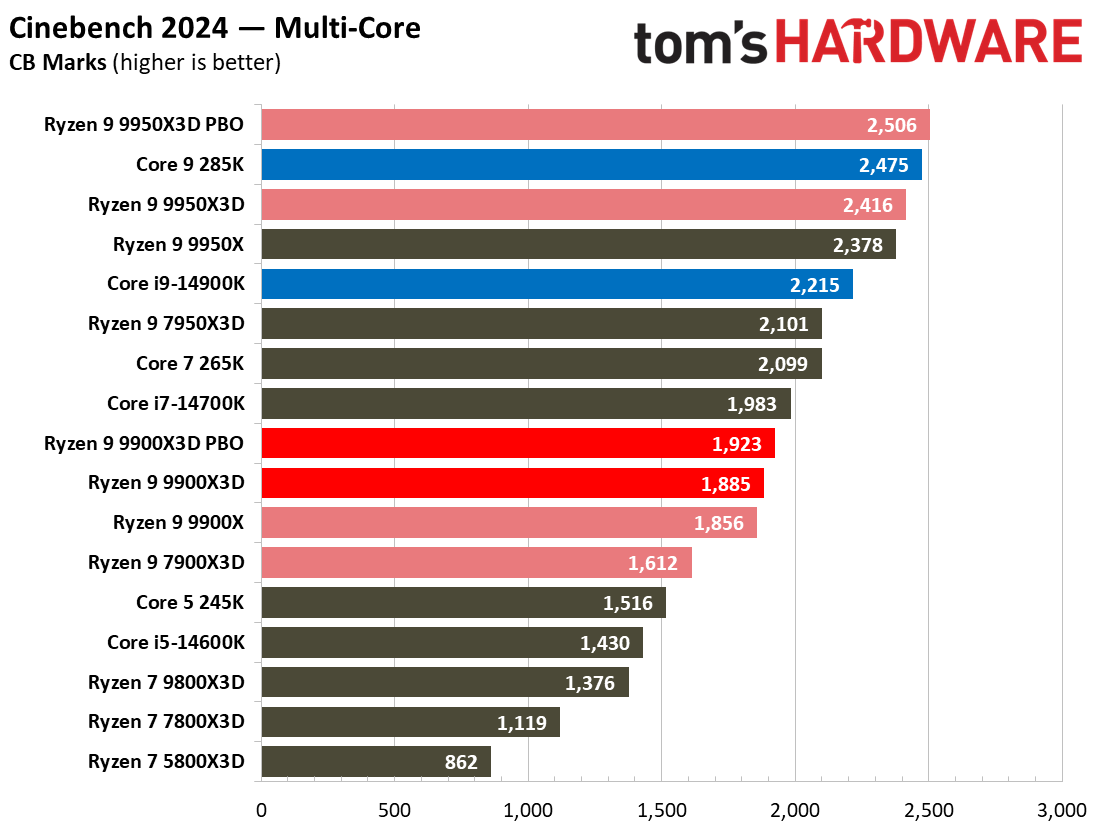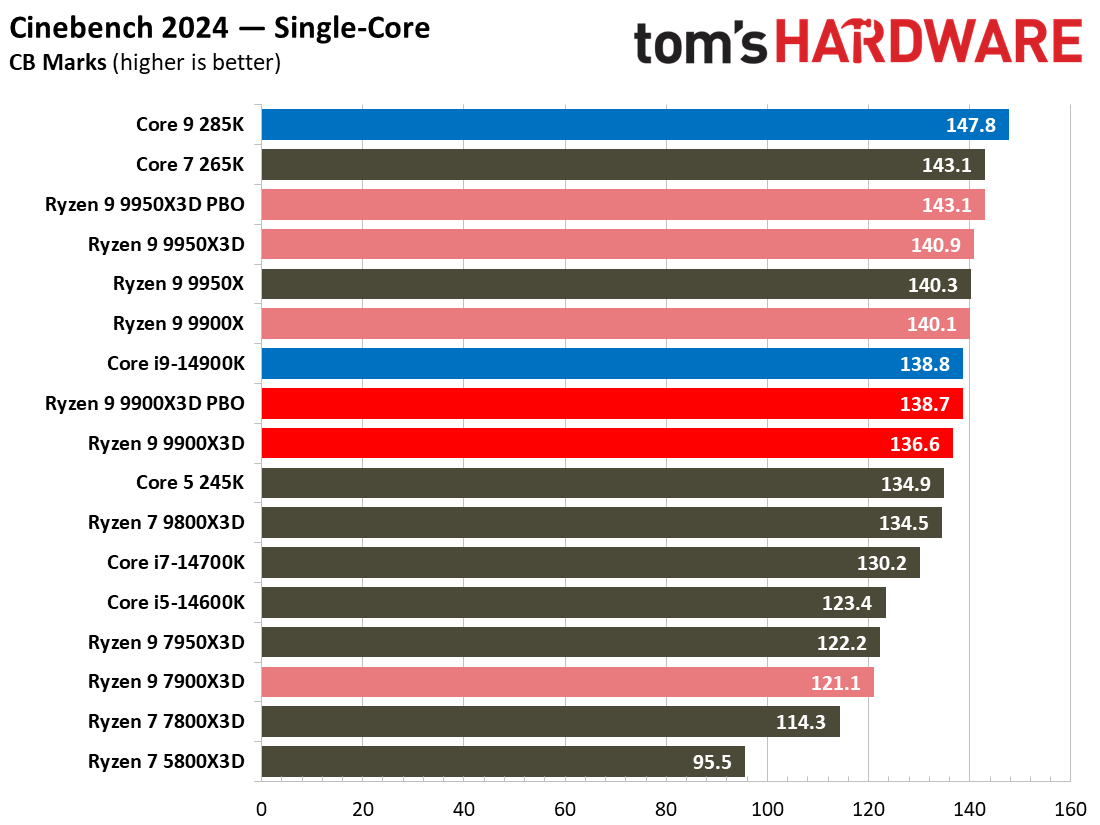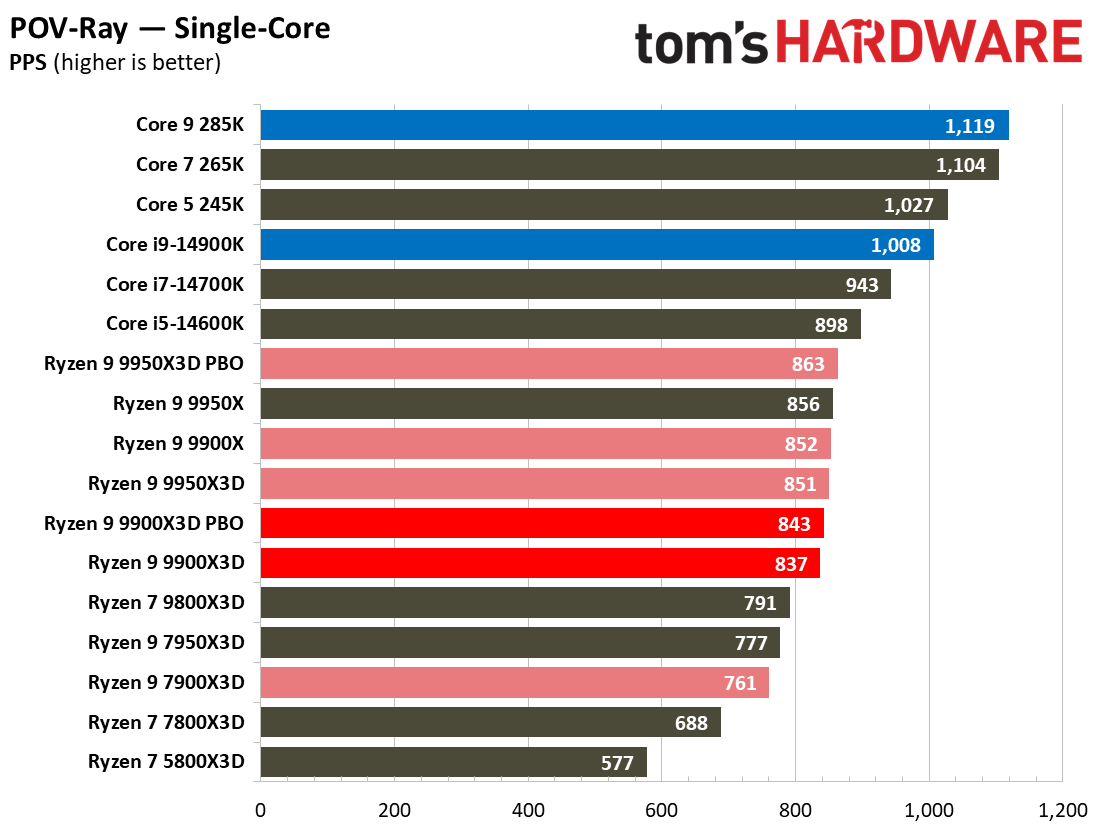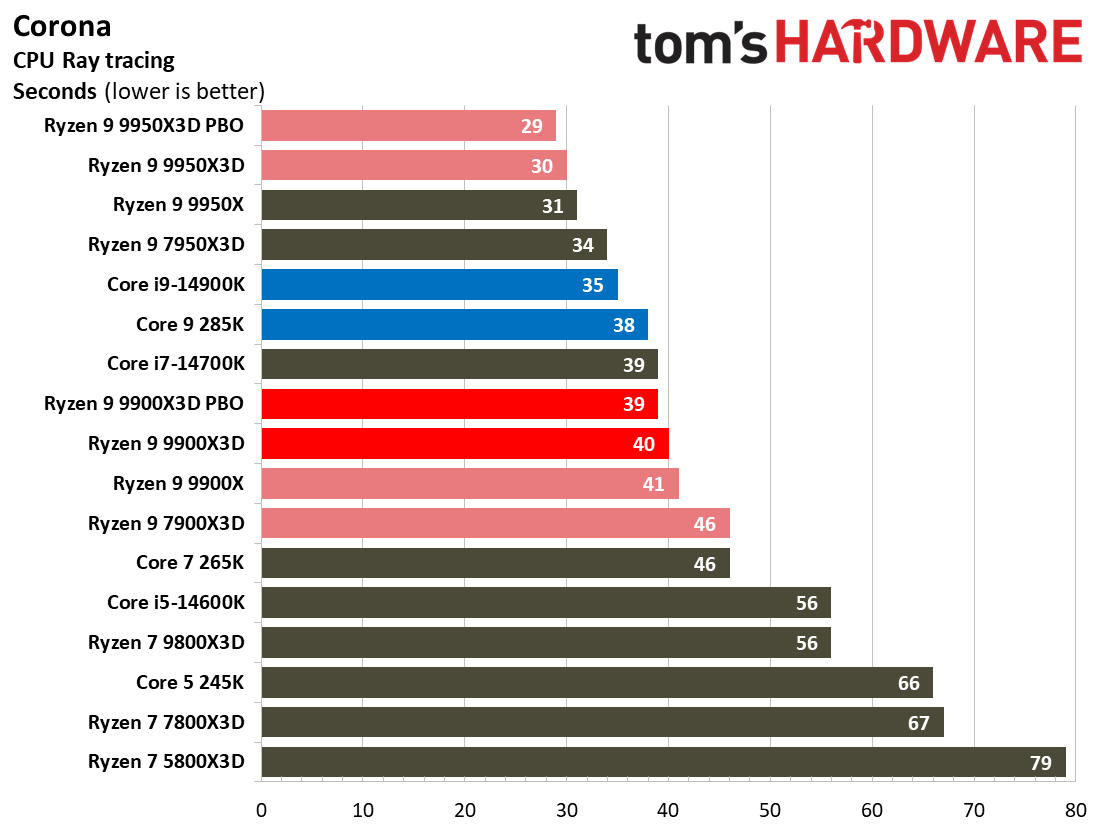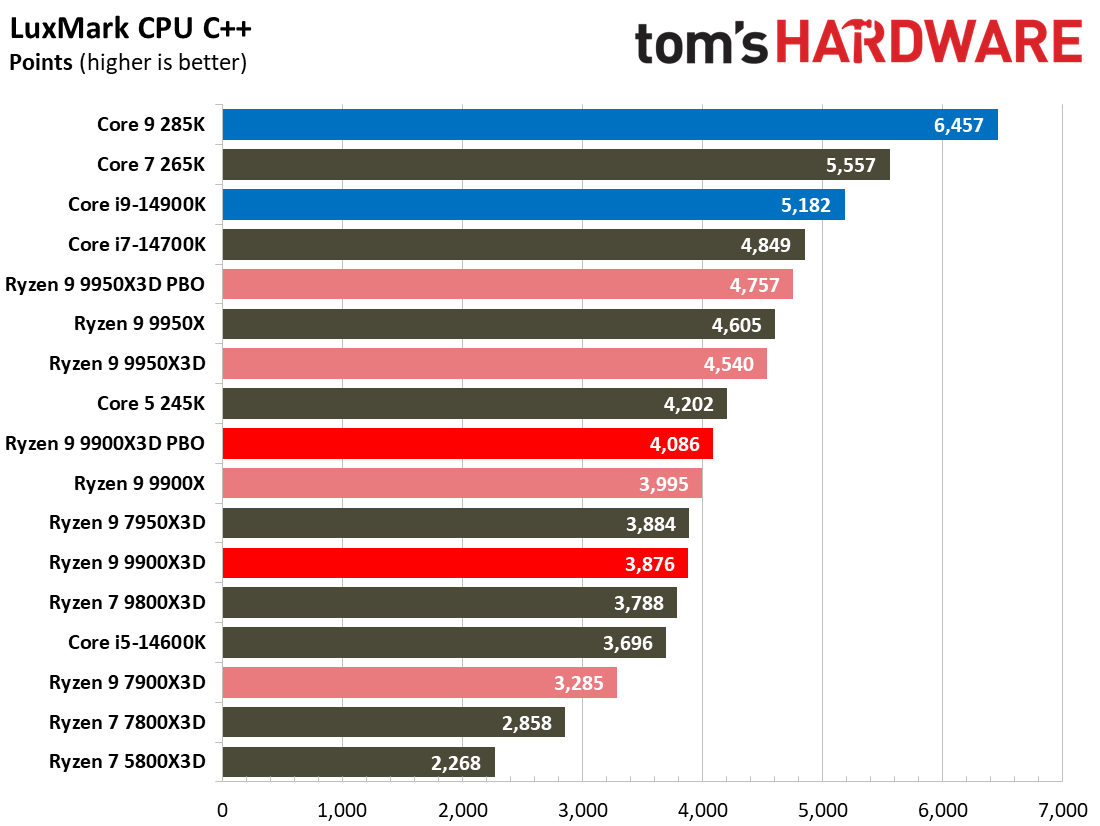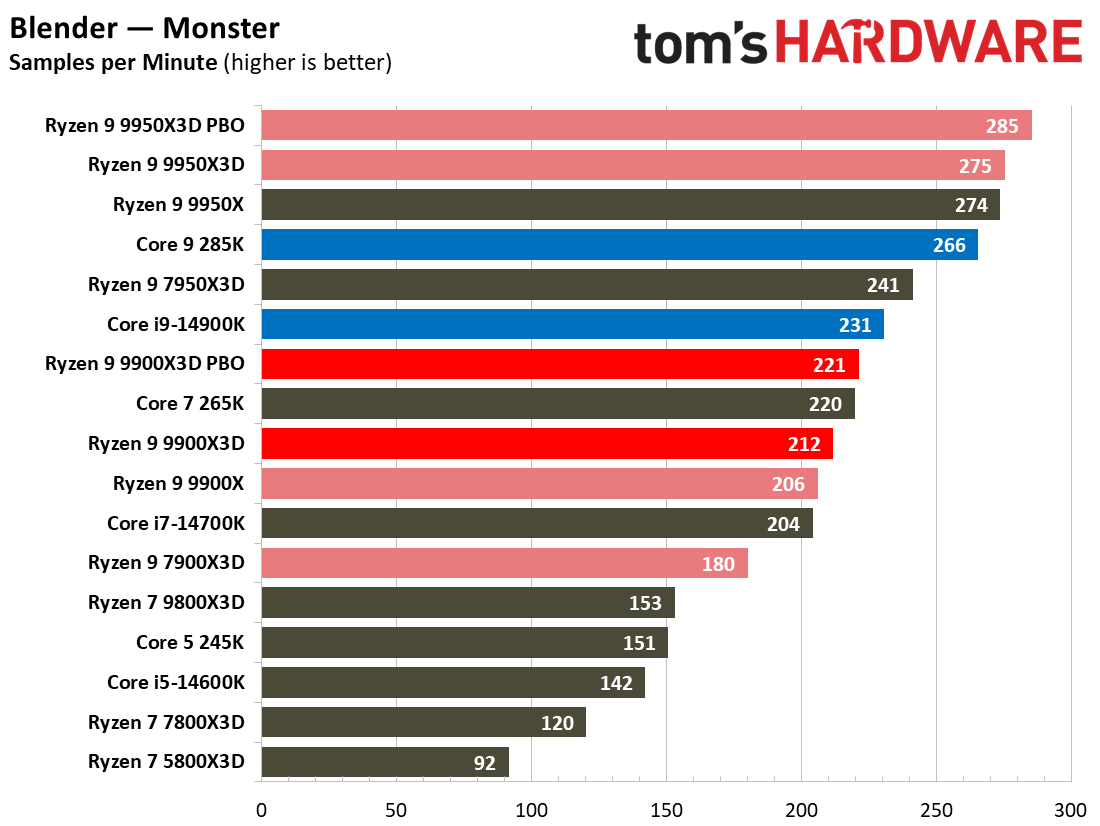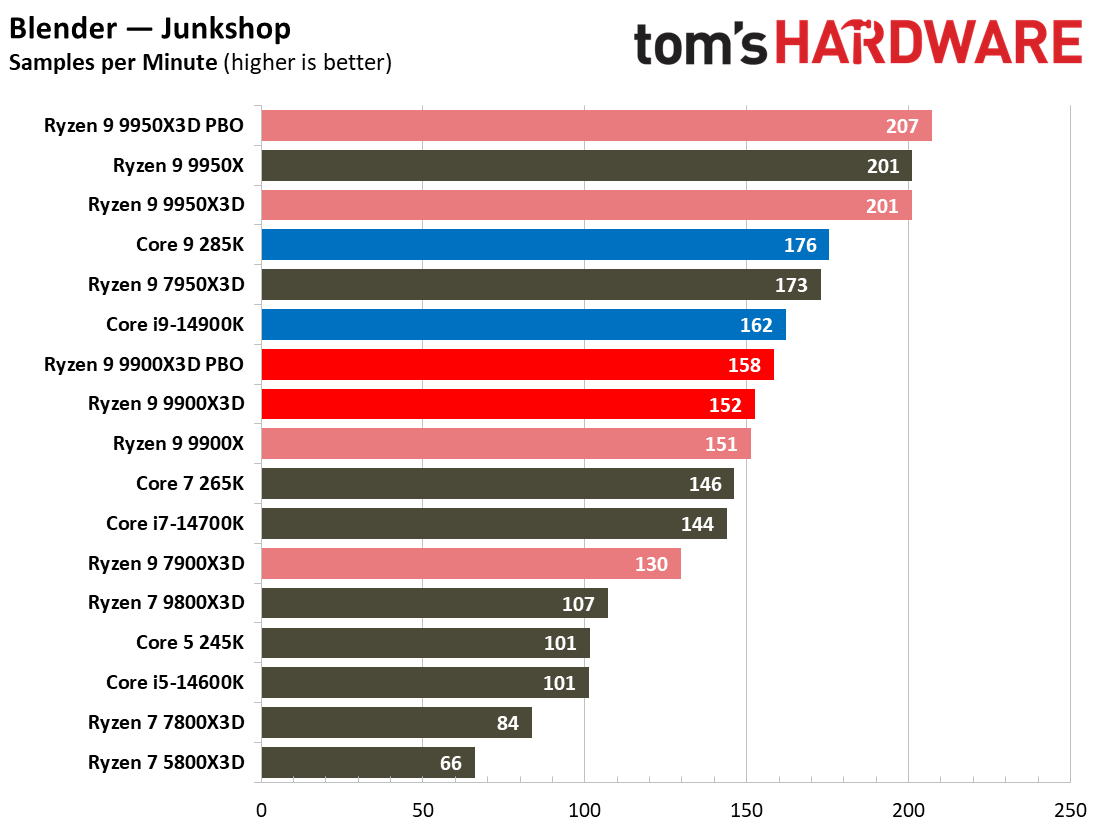Why you can trust Tom’s HardwareOur expert reviewers spend hours testing and comparing products and services so you can choose the best for you.Find out more about how we test.
AMD Ryzen 9 9900X3D Productivity Benchmarks
AMD Ryzen 9 9900X3D Productivity Benchmarks — The TLDR
This page covers a broad range of ‘standard’ desktop PC productivity applications, while the following page dives deeper into workstation-class workloads with SPECworkstation 4 benchmarks.We boil down productivity application performance into two broad categories: single-threaded and multi-threaded. These slides show the geometric mean of performance in several of our most important tests in each of these categories, but be sure to look at the expanded results below for a more granular analysis.
The $620 Core Ultra 9 285K is the $600 Ryzen 9 9900X3D’s real competitor in productivity workloads; it delivers far more performance in threaded workloads than the Core i9-14900K. In our overall measurement, the Core Ultra 9 285K is 23% faster than the 9900X3D in threaded workloads, but the $445 Core i9-14900K is still an impressive 10% faster than the Ryzen 9 9900X3D.In our cumulative single-thread performance measurement, the Core Ultra 9 285K is 7% faster than the 9900X3D, and the 14900K is 3.5% faster.The $700 Ryzen 9 9950X3D remains the king of the productivity hill, delivering 27% more performance than the $600 Ryzen 9 9900X3D in heavily threaded apps, an advantage borne of the higher core count and 170W TDP. It also offers 3% more performance in lightly threaded applications due to its higher boost clock. This generally mirrors the performance deltas we saw between the last-gen Ryzen 9 models, too.The 9950X3D’s impressive amount of extra performance over the 9900X3D costs $100 more (17%). Again, spending an extra $100 when you’re already considering the already expensive $600 Ryzen 9 9900X3D isn’t much of a lift, and it delivers a tangible benefit. That’s not to mention that the 9950X3D is much faster in gaming, too.The Ryzen 9 9900X3D takes a slight lead in multi-threaded workloads over its counterpart, the Ryzen 9 9900X, which has the same number of cores but lacks 3D V-Cache tech, but the two chips jockey back and forth for the lead across our multi-threaded workloads, so the competition is close enough to call a tie. That makes the less expensive $380 Ryzen 9 9900X the obvious choice if you’re only interested in productivity performance. Notably, the 9900X is ~2% faster in single-threaded work, perhaps due to better core residency in a few single-threaded workloads (the two chips have the same boost clock rates).The Ryzen 9 9900X3D delivers a strong gen-on-gen improvement of 19% in heavily threaded applications and a 7% gain in lightly threaded workloads over the prior-gen Ryzen 9 7900X3D.The 9900X3D can’t quite keep pace with the 16-core Ryzen 9 7950X3D in threaded work, but it comes close — the 7950X3D is surprisingly only 7% faster in threaded workloads despite having 33% more cores. The 9900X3D is about 6% faster in single-threaded work than the 7950X3D, though, showing the benefits of the Zen 5 architecture’s higher instruction per cycle (IPC) throughput.Our simple PBO overclock yielded a 7% boost for the 9900X3D in threaded workloads with minimal fuss, and we also included those results in the albums below. We gained 5% when overclocking the Ryzen 9 9950X3D. Remember, the Intel processors would also benefit from overclocking, but this would require far more manual intervention.As a side note, we have long included the y-cruncher benchmark in our cumulative measurement of threaded performance. However, this heavily-threaded AVX-512 benchmark recently received tuned optimizations that deliver explosive gains for the Ryzen 9000 processors, but the massive deltas don’t generally align with what we see in actual AVX-512-enabled applications. As such, we’ve removed the benchmark from our overall calculation, but you can still see the individual results below.
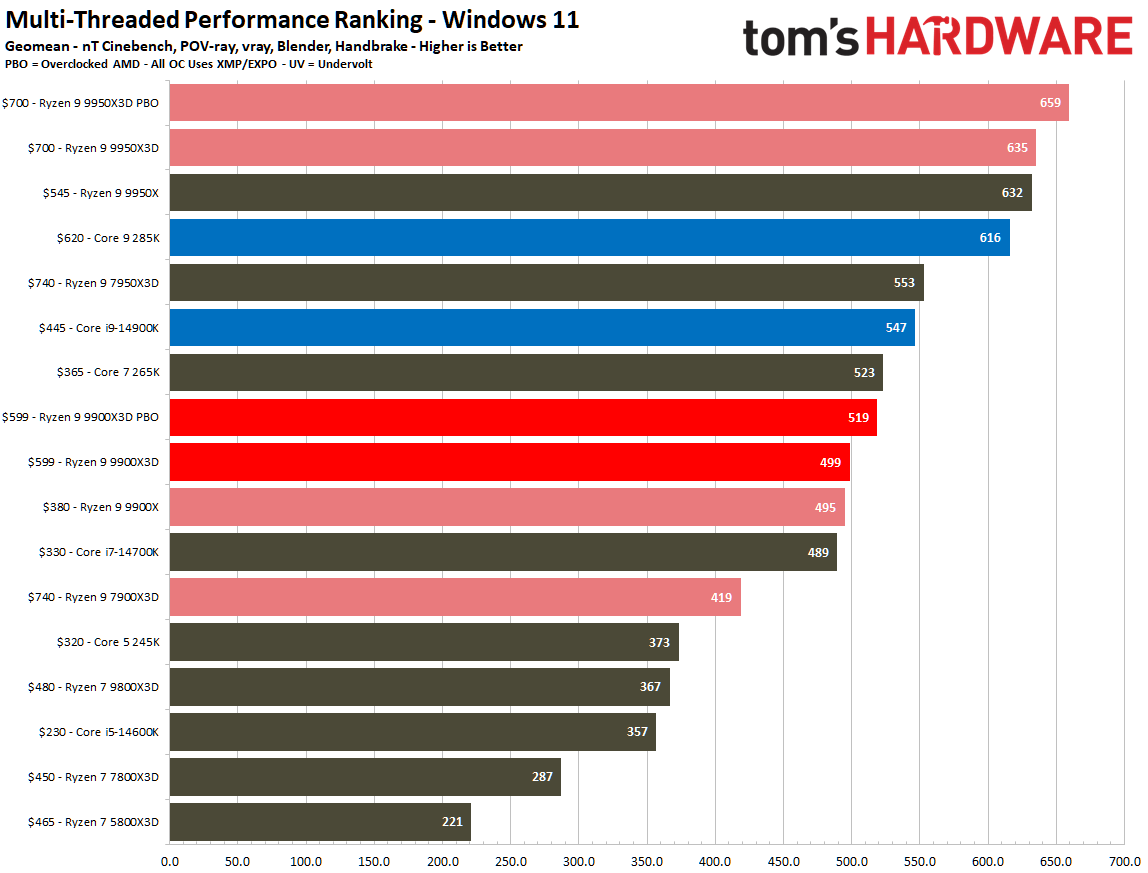
Rendering Benchmarks
The Core i9-14900K matches or beats the 9900X3D in nearly all rendering workloads but at a much lower price point. Meanwhile, the Arrow Lake Core 9 285K dominates the Ryzen 9 9900X3D by much larger margins.The Ryzen 9 900X3D delivers strong gains in some workloads from the PBO feature, and we also notice there’s often only a slim difference between the 9900X and 9900X3D.
Encoding Benchmarks
Most encoders tend to be either heavily threaded or almost exclusively single-threaded — and it takes an agile chip to master both disciplines. Handbrake, SVT-HEVC, and SVT-AV1 serve as our threaded encoders, while LAME and FLAC are indicative of how the chips handle lightly-threaded engines.
Adobe Photoshop, Premiere Pro, DaVinci Resolve
ThePugetBench for Creatorssuite is a wonderful tool for benchmarking multiple types of Adobe applications, not to mention DaVinci Resolve. We used the benchmark for Photoshop, Premiere Pro, and DaVinci workloads.The Ryzen 9000X3D chips lead Intel across the board in Adobe Photoshop and Lightroom, but Adobe Premier Pro finds a much more contested picture, with the 285K taking the lead over the 9900X3D while the 14900K challenges. The 14900K claws out a slim lead over the 9900X3D in DaVinci Resolve Studio, while the 285K leads once again.
Web Browser, Office Benchmarks
The Core Ultra 9 285K has a 4% lead over the 9900X3D in the WebXPRT4 overall score, while the Core i9-14900K trails slightly. In contrast, the 9000X3D leads convincingly in the Edge browser benchmark.
Compilation, AVX, Scientific Workloads, Chess Engines, Others
This selection of tests runs the gamut from massively parallel molecular dynamics simulation code in NAMD to compression/decompression performance.Y-cruncher computes Pi with the AVX instruction set, making for an exceedingly demanding benchmark. This benchmark was recently updated with specific tuning for AMD’s AVX-512 implementation. The new code delivers a big boost to Ryzen, but it isn’t as representative of performance in real-world applications as the older, unoptimized version. Most code simply isn’t as well tuned, or doesn’t utilize AVX-512 to such a heavy extent. Intel’s new chips make big strides in this benchmark over the prior generation, but they only support AVX-256 natively, so AMD gets an easy win — the Ryzen 9 chips are incredibly impressive in the BPP benchmark.The 285K takes a strong lead in the NAMD simulation code benchmark, while the AMD processors excel at most Chess engine benchmarks.
Compression, Encryption
We’ve added several more compression, decompression, and encryption benchmarks to better capture the performance deltas in different algorithms. The Intel chips generally take the lead, but that isn’t always the case. Some workloads, like Google’s Brotli compression engine, favor AMD’s chips.
AI Workloads, Geekbench 6
The Core Ultra 9 285K easily leads in the Procyon Computer Vision Benchmark with the larger float32 data type. However, the AMD processors are more competitive with float16 and ultimately take the lead in the integer benchmark.The GeekBench AI results in the slide deck above show performance with the workload running on the CPU cores via OpenVino and ONNX. Only two CPUs in this group have in-built NPUs — the Core Ultra 9 285K and Ultra 7 265K — making them the only processors capable of running the workload on a dedicated NPU. Given that the NPU is focused on low-power inference tasks, the results are impressive relative to the performance when the workload executes on the CPU cores.
Java, PHP Workloads
Current page:AMD Ryzen 9 9900X3D Productivity Benchmarks
Paul Alcorn is the Editor-in-Chief for Tom’s Hardware US. He also writes news and reviews on CPUs, storage, and enterprise hardware.
